#Modern Farming techniques
Text
Modern Farming Techniques: Innovations Revolutionizing Agriculture

In the ever-evolving landscape of agriculture, modern farming techniques have emerged as a game-changer, revolutionizing traditional practices and paving the way for sustainable and efficient food production. From precision agriculture to robotics and automation, let’s delve into the cutting-edge innovations shaping the future of farming in 2024.
1. Precision Agriculture: Maximizing Efficiency
Precision agriculture harnesses technology to optimize crop yields while minimizing input costs. Utilizing tools such as GPS, drones, and sensors, farmers can precisely monitor and manage factors like soil moisture, nutrient levels, and pest infestations. By applying inputs only where and when needed, precision agriculture promotes resource conservation and enhances productivity, ultimately ensuring a more sustainable farming future.
2. Vertical Farming: Scaling Up Sustainability
Vertical farming represents a paradigm shift in agriculture, allowing crops to be grown in vertically stacked layers within controlled indoor environments. This innovative approach maximizes land use efficiency, reduces water consumption, and minimizes dependency on conventional farming practices. With advancements in LED lighting and hydroponic systems, vertical farms can produce a wide range of crops year-round, addressing the challenges of food security and urbanization.
3. Hydroponics and Aquaponics: Cultivating Without Soil
Hydroponic and aquaponic systems eliminate the need for soil altogether, relying on nutrient-rich water solutions to nourish plants. In hydroponics, plants grow directly in water, while aquaponics integrates fish farming with plant cultivation, creating a symbiotic ecosystem where fish waste fertilizes the plants. These soilless farming methods offer higher yields, faster growth rates, and reduced water usage compared to traditional farming, making them vital components of sustainable agriculture.
4. Artificial Intelligence in Farming: Smart Solutions for Smarter Farming
Artificial intelligence (AI) is revolutionizing farming by enabling data-driven decision-making and automation of various tasks. Through predictive analytics and machine learning algorithms, AI systems can analyze vast amounts of data to optimize planting schedules, detect crop diseases early, and even autonomously operate farm machinery. By harnessing the power of AI, farmers can increase efficiency, reduce labor costs, and improve crop quality, driving productivity to new heights.
5. Sustainable Farming Practices: Nurturing the Land for Future Generations
Sustainability lies at the heart of modern farming techniques, emphasizing practices that preserve the environment and support long-term food production. Crop rotation, cover cropping, and integrated pest management are just a few examples of sustainable farming practices that promote soil health, biodiversity, and resilience to climate change. By adopting these holistic approaches, farmers can safeguard the land for future generations while ensuring a stable and secure food supply.
6. Robotics and Automation: Transforming the Farming Landscape
Robotic technologies are increasingly being deployed in agriculture to perform a wide range of tasks, from planting and harvesting to weeding and spraying. Autonomous drones and robotic harvesters enable precise and efficient operations, reducing manual labor and increasing productivity. With advancements in AI and robotics, farms of the future will be more autonomous and efficient, ushering in a new era of farming that is both sustainable and profitable.
7. Emerging Trends in Modern Farming:
In addition to the established techniques mentioned, several emerging trends are poised to further revolutionize agriculture in 2024 and beyond. One such trend is the integration of blockchain technology to enhance supply chain transparency and traceability. By leveraging blockchain, farmers can track the journey of their produce from farm to fork, ensuring food safety and quality assurance. Moreover, blockchain enables consumers to make informed choices about the origin and sustainability of the products they purchase.
8. Climate-Smart Agriculture:
With climate change posing significant challenges to agricultural productivity, there is a growing emphasis on climate-smart agriculture (CSA) practices. CSA focuses on adapting to and mitigating the impacts of climate change while ensuring food security and livelihood resilience. Techniques such as drought-resistant crop varieties, rainwater harvesting, and agroforestry play a crucial role in building resilience to extreme weather events and reducing greenhouse gas emissions. By embracing climate-smart practices, farmers can better withstand the challenges posed by a changing climate.
9. Urban Farming and Community Gardens:
As urbanization continues to accelerate, urban farming and community gardens are gaining popularity as means of promoting local food production and community engagement. These initiatives transform vacant lots and rooftops into productive green spaces, allowing city dwellers to grow their own fresh produce and reconnect with nature. Urban farming not only provides access to nutritious food but also fosters social cohesion and empowers communities to take control of their food systems.
10. The Role of Policy and Investment:
The widespread adoption of modern farming techniques relies not only on technological innovation but also on supportive policies and adequate investment. Governments play a crucial role in incentivizing sustainable farming practices through subsidies, grants, and regulatory frameworks that promote conservation and environmental stewardship. Additionally, private sector investment in agricultural research and infrastructure is essential for driving innovation and scaling up adoption of modern farming technologies.
Conclusion
As we look to the future of agriculture, it’s clear that modern farming techniques are shaping a more sustainable, efficient, and resilient food system. By embracing innovation and technology, farmers can overcome the challenges of feeding a growing global population while safeguarding the health of the planet. As we continue to push the boundaries of what’s possible, the future of farming looks brighter than ever before.
#Modern Farming Techniques#Modern farming techniques 2024#Cons of Modern Technology#Pros of Modern Technology
0 notes
Text
0 notes
Link
This refusal to overtly participate in progressive politics was intensified when the leaders of the Institute moved it to the United States in the early 1930s. The Frankfurt School adapted itself “to the local bourgeois order, censoring its own past and present work to suit local academic or corporate susceptibilities.”[22] Horkheimer had words like Marxism, revolution and communism expunged from its publications in order to avoid offending its U.S. sponsors.[23] Furthermore, any type of political activity was strictly forbidden, as Herbert Marcuse later explained.[24] Horkheimer put his energy into securing corporate and state funding for the Institute, and he even hired a public relations firm to promote its work in the U.S. Another émigré from Germany, Bertolt Brecht, was thus not fully unjustified when he critically described the Frankfurt scholars as—in the words of Stuart Jeffries—“prostitutes in their quest for foundation support during their American exile, selling their skills and opinions as commodities in order to support the dominant ideology of oppressive U.S. society.”[25] They were indeed intellectual free agents unrestrained by any working-class organizations in their pursuit of corporate and state sponsorship for their brand of market-savvy critical theory.
Brecht’s close friend, Walter Benjamin, was one of the Frankfurt scholars’ most important Marxist interlocutors at the time. He was not able to join them in the United States because he tragically committed suicide in 1940 at the border between France and Spain, the night before he faced near certain apprehension by the Nazis. According to Adorno, he “killed himself after he had already been saved” because he had “been made a permanent member of the Institute and knew it.”[26] He was “flush with funds” for his trip, in the words of the famous philosopher, and knew “that he could rely completely on us materially.”[27] This version of history, which presents Benjamin’s suicide as an incomprehensible personal decision given the circumstances, was an exercise in mendacity for the sake of personal and institutional exoneration, according to a detailed analysis recently published by Ulrich Fries. Not only were the leading figures of the Frankfurt School unwilling to assist Benjamin financially for his flight from the Nazis, Fries argues, but they also ran an extensive cover-up campaign to disingenuously present themselves as his benevolent benefactors.
#going through this spicy reading atm#it appears quite long. thankfully Pomofarm is helping#doesnt stand for post-modern farm#its a focus tool + game that is like. the pomodoro technique except u grow crops on ur little duck farm by focusing on ur task#available on steam
8 notes
·
View notes
Text
How Big Should Your Farm Be to Make a Profit?
Many new agripreneurs believe that the size of their farm will determine how profitable they’ll be. However, you can be profitable whether you’re farming 1 hectare or 100 hectares; it all depends on how you farm. When it comes to land, the most important thing to consider is not the number of hectares at your disposal, but rather the commodity that you farm and how you manage and control costs.…
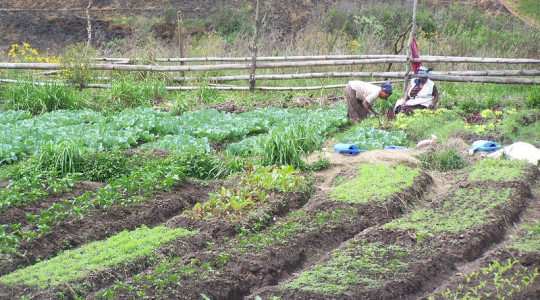
View On WordPress
#Agricultural business success#Crop diversification benefits#diversified farming#Effective irrigation systems#Efficient farming methods#Farm cost management#Farm operational costs#Farm planning strategies#Farm productivity tips#farm profitability#Farm risk management#Farming market trends#Farming technology#high-value crops#High-yield crop varieties#Large-scale farming#Livestock integration#Low-cost farming solutions#Micro-farming#Modern farming tools#Niche crop farming#Organic farming practices#precision farming#Profitability in agriculture#Small farm equipment#Small-Scale Farming#Smart farming techniques#Starting a farm business#Successful farming examples.#sustainable farming
0 notes
Text
eating salmon: an explanation
lox: thin cuts of salmon (traditionally the fatty belly meat) dry cured with salt, but not smoked. this results in a delicate texture and a very salty taste. lox originated in Scandinavia as a method of preserving fish prior to refrigeration, but the American English word is derived from Yiddish because Jewish delis in New York first popularized it as a bagel topping. since lox is a type of uncooked fish, it is not recommended for pregnant people, immunocompromised people, or seniors, due to the risk of contamination with listeria.
cold-smoked salmon: thin cuts of salmon brined (with less salt than lox) and then smoked below 90 degrees Fahrenheit. results in the same silky texture but a milder, more palatable taste. often called "Nova lox", referring to Nova Scotia but denoting a method of preparation rather than the fish's origin. this is usually what modern Americans are referring to when they use the term "lox". cold-smoking reduces but does not eliminate the risk of listeria.
hot-smoked salmon: salmon brined quickly and then smoked above 120 degrees Fahrenheit. results in a flaky, jerky-liked texture, a hard shiny surface, and a smoky flavor. (as a West-coaster, this is my preferred style!) hot-smoking eliminates listeria during the cooking process, but salmon can be recontaminated during the processing/packaging process if the facility is not sanitary. (really, this is true of all foods- vegetables, dairy products, etc).
salmon candy: a traditional Pacific Northwest hot-smoked salmon recipe where the brine is sweetened with brown sugar, and the smoked fish is glazed with a sauce containing birch or maple syrup.
salmon jerky: cured salmon hot-smoked for longer than usual or processed in a dehydrator until it is tough and chewy.
gravlax: a traditional Scandinavian raw salmon recipe where the brine contains sugar and dill. historically buried in the ground and lightly fermented. sometimes it is still pressed to give it a dense texture.
kippered salmon: thicker cuts of brined salmon hot-smoked above 150 degrees Fahrenheit. results in a texture similar to baked salmon.
salmon sushi/sashimi: completely raw fresh salmon. this didn't exist in traditional Japanese cuisine, where salmon was always cooked, possibly because the local wild salmon had a high burden of parasitic worms (anasakis nematodes). Norwegian fish sellers convinced them to try farmed Atlantic salmon raw in the 80s, and it really took off.
poached salmon: salmon cooked on the stove while submerged in liquid (often white wine with lemon). results in a moist, soft, cooked fish with a pale color. can be bland without sauce.
baked salmon: salmon cooked in an oven, often wrapped in aluminum foil with seasonings to retain moisture and flavor. can result in perfect, flaky fish (as long as you don't overcook it).
dishwasher salmon: look, sometimes white people wrap salmon in aluminum foil like they're going to bake it and then poach it in their dishwasher instead. this can work but is stupid because the temperature dishwashers run at isn't standardized, so you have control over the process and it's easy to over or undercook.
pan-fried salmon: salmon cooked in oil on a stovetop. I've never done this and frankly it sounds wrong, but I bet it makes the skin crunchy.
broiled salmon: salmon cooked under a broiler. as with all broiled foods, you will have to stare at it the whole time or it will burn to a crisp while your back is turned. results in a caramelized exterior.
grilled salmon: to grill salmon people often put it on a Western redcedar plank pre-soaked in water, which supposedly infuses the salmon with a smoky, aromatic flavor while it cooks. I've seen the technique variously credited to the Haida, the Salish, and the Chinook. it seems to be a modern variation of the traditional "salmon on a stick" style of slow-cooking salmon by spearing it on branches and leaning it over the coals of an above-ground pit fire.
deep-fried salmon: this sounds absolutely awful but I simply cannot stop thinking about it
459 notes
·
View notes
Text
Mizu’s Period
I’m getting kind of sick of the weirdly agreed upon headcanon within the fandom that stipulates Mizu simply must not menstruate very much if at all, solely because Mizu is often injured, possesses a slender build as well as an athletic lifestyle, and in many ways is androgynous in appearance (but that last point is always unspoken ofc).
There also seems to be an odd obsession with using fanon theories that are not directly disproved nor proved in the canon, such as “Mizu never eats enough” as evidence for the Mizu’s Uterus Is Not Like Other Girls Reproductive Organs™️ headcanon, that presumes Mizu is just so special she’ll bleed from everywhere except her pussy.
Like… is it perfectly possible that Mizu does not often get her period due to her extremely active and dangerous lifestyle? Yes, of course! Does Mizu’s slender and athletic frame make this seem like more of a possibility? It could, but her physique in of itself is not “evidence” per say, especially since Mizu’s body looked exactly the same when she was living a much easier and more comfortable lifestyle on the farm with Mikio, and they clearly had plenty of food. Mizu also wasn’t training intensely if at all for the 8-12 months she was married to Mikio. Yet her build remained the same. So it’s perfectly probable that Mizu’s physique is most greatly impacted by her genetics and thus not greatly affected by physical activity.
And for everyone that’s about to shout “but women athletes that compete at the highest levels often loose their periods for a while!” yes absolutely, some of them do. They also work out for 2-6+ hours a day six to seven days a week, use treadmills, bench press, and eat ridiculously curated diets that specifically target certain macronutrients and involve carefully curated portions that must be eaten at the right times on the right days. The fuck makes you think Mizu is doing all that?? My girl inhales whatever food is put in front of her as long as she has good reason to believe it is safe (i.e not poisoned). Do you really think modern day Olympic power lifters, track and field runners, artistic gymnasts and rhythmic gymnasts are all slurping down full servings of soba or dumbplings just whenever? Fuck no. Also, the current top women athletes in the world from the aforementioned Olympic sports I just mentioned, all have vastly different body types. As well as extremely different dietary needs, training routines, workouts, and just plain genetics that would have naturally given them certain bodies regardless of sport.




as evidenced by the above photos of various female olympic athletes: power lifter (top left), track and field runner (top right), artistic gymnast (bottom left), and rhythmic gymnast (bottom right).
Mizu is not a power lifter, or a sprinter, or an archer, or anything of the sort. Mizu does not train to be incredible at one thing, nor does she base what she eats or how she trains on when she will be preforming at a specific event (such as Olympians do). She is a swordsman, a blacksmith, and an all around athletic person that needs to stay in a state of constant readiness for any physical activity. Such as climbing, swimming, horseback riding, using acrobatic techniques, performing martial arts, working on a farm, and so much more. All of which is presented as such in canon. Not to mention Mizu lives as a lower-class individual in Japan during the 1600s. What ever gave you the idea that she was dieting and training like a modern athlete? Mizu is not a sportsman, she’s a killer.
So can we just stop, please? Plenty of people menstruate. Its perfectly normal and natural. And as someone who has been at a much lower weight at different points in my life with less than desirable health conditions (to say the least), menstruation does not magically halt just because you (stranger on the internet) thinks it “logically” should under such circumstances. That’s not how it works. Bodies are weird, and everyone’s body works a bit differently. And if Mizu actually was as sick and muscular and thin as everyone seems to have headcanoned her as, then how the fuck is she mopping everyone she fights? If Mizu is “so active and low weight that she can’t be getting her period” then how do you explain the fact that she is able to preform at peak physical level while being so active? Make it make sense.
And for the love of god, please stop acting like menstruation is “special” or “other” or “weird”. It’s not. Get educated, and get over yourself.
#some of you make the strangest jumps in logic for the iffiest reasons#blue eye samurai#mizu#blue eye samurai meta#mizu blue eye samurai#bes mizu#mizu bes#bes netflix#bes headcanons#blue eye samurai analysis#blue eye samurai headcanons#blue eye samurai theory#blue eye samurai fandom#female characters#afab character#writing women#media literacy#reader bias
122 notes
·
View notes
Text

Ancient Roman Elite Necropolis Discovered in Italy
A two-year dig to install a solar power plant near Rome has unearthed an ancient Roman necropolis containing 67 skeletons buried in 57 ornate tombs.
Archaeologists were baffled by the find — thought to date between the second and fourth centuries — not least because the skeletons were discovered wearing golden jewelry and expensive leather footwear, inside tombs designed to resemble their homes.
The discovery, on a 52-acre patch of land close to the ancient city of Tarquinia, north of Rome, was a surprise to authorities, despite the area being renowned for such findings.
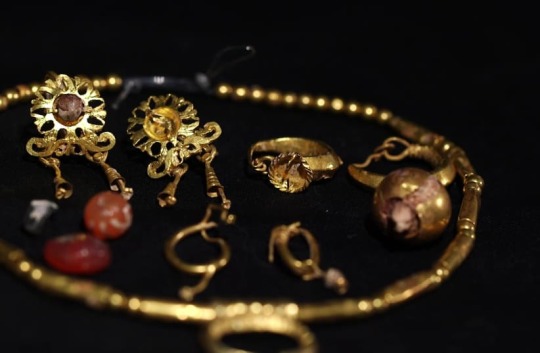
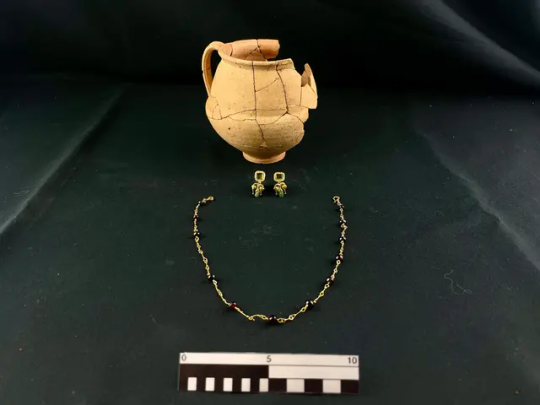

Silver rings with amber and engraved initials, precious stones, terracotta pottery, coins, shiny glasses, amulets and even items of clothing were found alongside the golden necklaces and earrings.
“We found several skeletons still wearing their expensive stockings and shoes,” Emanuele Giannini, lead excavation archaeologist at the site said. “All these riches, and the fact that the bones show no sign of stress or physical labor, (leads us to believe) these weren’t local farmers, but upper-crust members of Roman families coming from cities.”
Giannini said techniques of “pre-emptive archaeology” such as field surveys and trial trenches were used to identify potentially ancient constructions below ground.
“We did have a faint idea that some treasure could lie there, as historical sources mentioned the location of a postal station for travelers near the site,” explained Giannini. “Many Romans would stop (here) for the night to eat and rest, but the magnitude of the discovery is unmatched.”


The diversity of funerary objects laid near the remains, and the luxurious designs and linings inside the tombs, have led archaeologists to believe that the occupants wanted to recreate heavenly spaces similar to their earthly homes. The interior of many tombs originally featured elaborate cloth linings, or were surrounded and covered by tiles or terracotta pieces like little houses.
Giannini said another astounding aspect is that most of the discovered tombs were communal — built for at least two occupants who likely shared a family link. A few skeletons were found wrapped around each other.
“Building tombs for entire family nuclei is a typical ancient Roman trait,” he said, “but these are outstanding in their inner decor, which shows wealth and status.”
The shallow tombs were found just 20 inches below the surface — almost popping out of the grass — yet nobody had ever noticed anything peculiar.
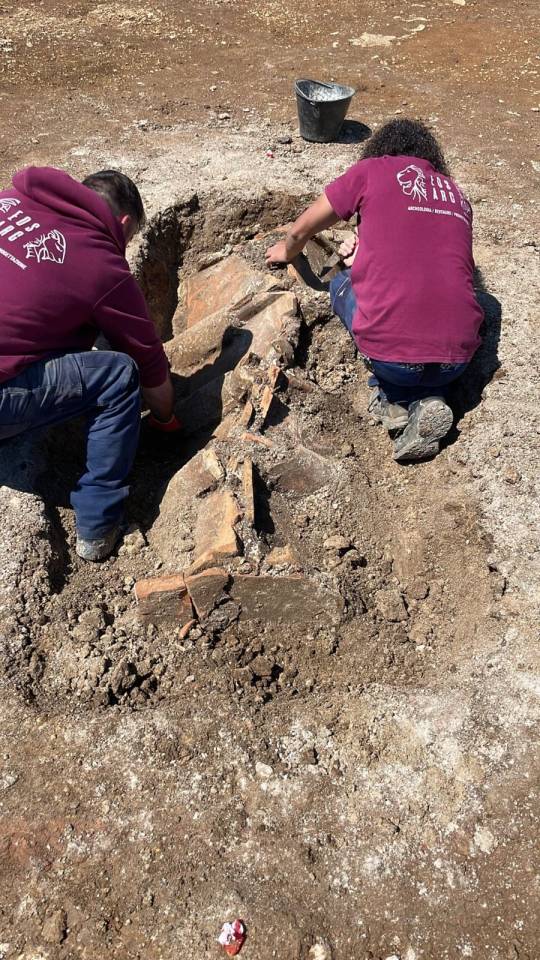



The site’s unique state of preservation has been attributed to the fact that “huge limestone blocks that stick out of the ground (made) ploughing, seeding and modern farming impossible in the area,” said Giannini. “It has remained untouched (for) centuries.”
Findings from the dig, which started in 2022, are being preserved as they’re found and many are going on show at the castle of Santa Severa in the coastal town of Santa Marinella. The skeletons however, are being analyzed to determine their origins and will not be put on display until forensic tests have been carried out.
Whatever their genesis, authorities are certain more hidden wonders will come to light as digs for the solar park move to another nearby site.
“We are excavating a huge rural area to redevelop the land and are balancing the need to avoid ruining such unique wonders with the goal of boosting clean energy production,” Margherita Eichberg, art heritage superintendent of the provinces of Viterbo and southern Etruria for Italy’s Culture Ministry said. The area where the necropolis has been discovered will not form part of the solar park and will be cordoned off for safety reasons, without public access.
“This is the fascination and beauty of Italy: Each time there’s a dig, incredible wonders from the past come out of the ground which need to be preserved.”
By Silvia Marchetti.

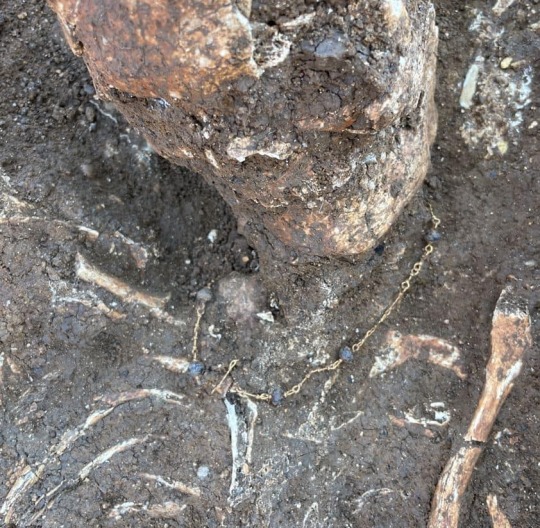
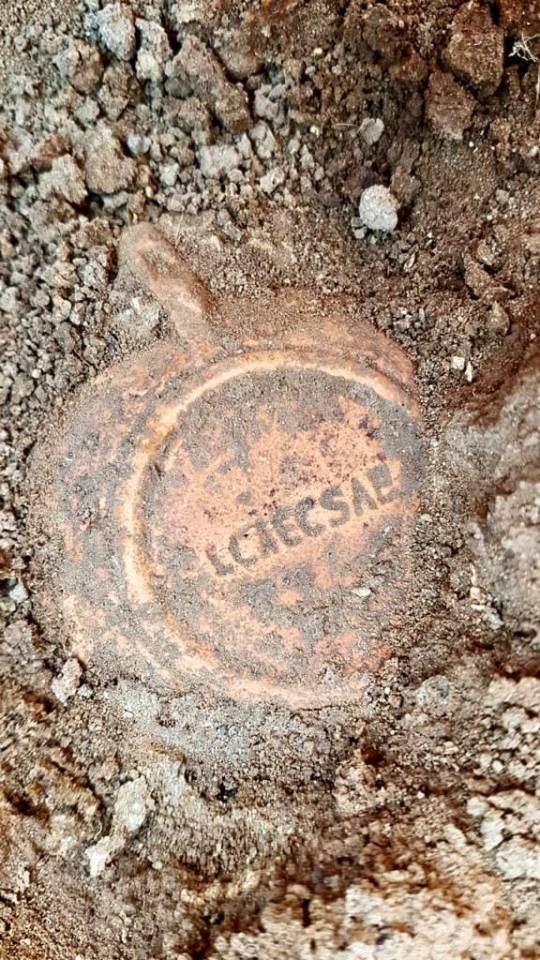


#Ancient Roman Elite Necropolis Discovered in Italy#ancient city of Tarquinia#ancient graves#ancient tombs#funeral goods#gold#silver#ancient artifacts#archeology#archeolgst#history#history news#ancient history#ancient culture#ancient civilizations#roman history#roman empire#roman art
73 notes
·
View notes
Photo

The Sweet Track
The Sweet Track is a Neolithic timber walkway, located in the Somerset Levels, England. It was originally part of a network of tracks built to provide a dry path across the marshy ground. The Sweet Track ran between what was then an island at Westhay to a ridge of high ground, close to the River Bruce. The remains of mounds have also been found at Westhay, indicating the remains of a settlement.
About 1.6 kilometres (1 mile) long, the Sweet Track was discovered in the 1970s CE during a peat excavation by Ray Sweet, (who also gave the track its name). Using dendrochronology (tree-ring dating) the track has been dated 3807/3806 BCE. For many years it was thought to be the oldest trackway in Northern Europe, until 2009 CE when a slightly older one was discovered in Plumstead, London.
The Somerset Levels are an area of wetlands and peats. The conditions of such areas can naturally lead to the preservation of organic materials. Materials become encased in a wet and airless environment, thus preventing, to a degree, decomposition. Wooden artefacts and structures have been recovered from the Levels, as well as the two well-preserved Iron Age villages of Glastonbury and Meare.
The track would have been built by a community of Neolithic farmers living in small settlements. Farming had spread from the Middle East and by this point was firmly established in Britain. According to pollen evidence, the whole of Britain would have been covered in forests at this time. The Neolithic peoples would have burnt and cleared the forests to have the land on which to grow their crops, mostly grains. A fair degree of organization is evident in the stockpiling of wood and construction of the tracks, and some members of the community would have had to have skills in woodworking. Using stone and flint axes, the trees for the track were cut on dry land with different cutting techniques used, depending on their age. Older oaks were cut vertically whilst younger trees tangentially. Modern research has been carried out using replica axes and the cut marks have also been studied to establish the methods of cutting used. The planks of wood were put together in the marsh, the final construction taking about a day to complete. Long poles were driven slantwise into the ground and then planks were laid in between, held in place by vertical pegs. The planks were made of oak, ash and lime. The poles and pegs were made mainly of hazel and alder. There are also remains of another track, known as the “Post Track”, which dates 30 years earlier than the Sweet Track, 3838 BCE. It ran roughly parallel to the Sweet Track, possibly used by the builders of the Sweet Track as an access route.
Artefacts have been found beside the track, among them, pottery and axe heads including one made of jadeite. Whether they had been deliberately buried, perhaps as an offering, or just lost, remains unknown. There have been many Prehistoric trackways found in England, but more than half reside in Somerset. Included in these are the Abbot's Way, Eclipse, Honeygore, Meare Health and Garvins tracks. They were constructed using varying styles, such as corduroy - laying short logs parallel to each other and side by side. The Sweet Track is the most well-known of these. It has been declared a scheduled monument (of national importance). Most of it remains in its original location and requires constant conservation to keep the wood in its damp condition. There are reproductions and a donated section now resides in the British Museum, London.
Continue reading...
35 notes
·
View notes
Text
Israeli Agriculture. Development of a Resource in Service of an Ideology
Israel’s agricultural system is characterized by an intensive system of production employing the latest engineering techniques and biotechnology. It contributed 3% to GDP and employed 2% of the population in 2006. Agricultural output in 2008 was worth about $5.5 billion, of which 20 percent was exported (Statistical Abstract of Israel, 2008). Israel’s agricultural system has evolved in large measure due to political and historical factors that extend back beyond the establishment of the state of Israel. In Israel, endogenous drivers of agricultural policy, including religion, culture, socioeconomics and demographics, take on monumental importance. Foremost among these is the role of Zionism in shaping agricultural and water policy. Agriculture was integral to the realization of the Zionist project since its inception. The settlers were led by a pioneering spirit and a back to the earth ethos, which aimed to wed the people to the land. This agrarian vision had two branches – conquering the land through its transformation and redemption, and simultaneously the creation of a new Jewish man. «In exile, the story goes, the Jewish people have been separated from nature, forbidden to work the soil and forced to be urban. The Jewish people will go back to the land, and they will be rebuilt by the land. In their return Jews will again tend to the earth and draw strength from their renewed biological rootedness» (Schoenfeld, 2004: 6)[.]
The central goal of Zionism was to create a geographical Jewish presence in Israel/Palestine. Collective agricultural settlement of the land was seen as an integral part of this process due to its role in population dispersal, securing peripheral areas and nurturing a bond between the Jews and their homeland. The other important goal for agriculture was self-sufficiency, in light of Israel’s inability to trade with her neighbours. For these reasons, Israeli is one example of a country pursuing agriculture despite its unprofitability, not to mention the unsuitability of the ecological environment to the agricultural activity (Da’na, 2000: 419)[.] This can be most clearly evidenced through Israel’s policy of water development. As Lipchin remarks (2003: 69): «In a country with naturally scarce water resources it is astonishing to see that Israel’s water policy does not reflect this natural scarcity». For example, for a long time much of Israel’s land mass was used to grow cotton, a water and pesticide hungry plant, rather than food (Richter & Safi, 1997: 211).
[...] Zionist ideology [...] interfaces with agricultural policy in numerous other ways, contributing to the unique character of the Israeli agricultural system. These include: the establishment of collective farms, including kibbutzim and moshavim, to defend against attackers in the early years; large capital inflows from the Jewish Diaspora, the United States and German reparations, permitting modern technologies; a preference for expensive Hebrew labour, including prohibitions against Arab labour; and large subsidies to the agricultural sector of inputs such as water, due to their strategic importance in laying claim to the land. Along with the agrarian vision, the Jews brought with them a European modernizing initiative, which saw the need to redeem the landscape and shape it to the settlers´ will. This implied a series of sweeping changes in agricultural production methods and land use patterns, which would transform the country.
– 2009. Leah Temper, “Creating Facts on the Ground: Agriculture in Israel and Palestine (1882-2000),” Historia Agraria 48, pp. 75-110.
61 notes
·
View notes
Text
Headcanons that I have of the gods in the Percy Jackson universe
Themis (goddess of justice) - basically children and like those blessed by her are like living lie detectors but they can only tell if it is a lie if they hear the person say it (like to their face) and that's why they avoid political rallies
Persephone - Those blessed by her can grow any power they want but they have a pollen allergy
Hermes - his children and those blessed by him are like super fast like flash fast
Khione looks like Elsa
Athena hates the character of Spiderman and would disown her child on the spot if they decided to dress up as Spiderman during Halloween
Hestia is the official marriage counselor for all the Olympians
Zeus wanted to punish Hermes for writing Hamilton
Apollo wishes it was him that wrote Hamilton
Mr D discovered sparkling grape juice (welch sparkling grape juice) and hasn't been the same since then
Hephaestus owns an F1 team (guess which team) and often makes bets with Ares and Hermes on which team would dominate the season
Hades has a monopoly over most of the mines in the world
Hermes once caught one of his children trying to steal a package he delivered, he was confused if he should be proud or angry
Eris thrives on call of duty lobbies
Like Apollo's children, Artemis's hunters glow in the dark but its more of a silvery white glow
Demeter loves modern farming techniques expect pesticides
Poseidon works with Hephaestus to create mega cruise ship, they both split 50/50 in the profits
Ares would like gladiator fights to be a part of the Olympics but human rights
Apollo and Aphrodite would love to be judges on Rupaul's drag race
Hera owns a lot of real estate in New England and her side hustle is being a real estate agent but she found it too tiring so she just started a real estate company instead (idk I picture her to look like Lucy Liu)
Hera tried to open a marriage counseling business
Aphrodite tried to buy the Palace of versailles from Apollo
Hermes owns serval telemarketing companies and has several ponce schemes
During Covid 19 everyone was stressing Apollo and Asclepius (god of medicine) to make a vaccine because season 25 of The Bachelor was rumored to be delayed or canceled
Iris is a major stake holder in most tabloids
Jeff Bezos is just one of Hermes human forms
Poseidon owns several resorts in Bali and the Bahamas
39 notes
·
View notes
Text
Advancing Agriculture: Modern Farming Techniques for Sustainable and Efficient Food Production

Modern farming techniques encompass a wide range of practices, technologies, and innovations aimed at increasing agricultural productivity, efficiency, and sustainability. These techniques leverage advancements in science, engineering, and information technology to address challenges such as climate change, resource constraints, and growing global food demand. Here are some key modern farming techniques:
1. Precision Agriculture: Precision agriculture utilizes data-driven technologies such as GPS, sensors, drones, and satellite imagery to optimize crop management practices. By collecting and analyzing real-time information about soil conditions, weather patterns, crop health, and resource utilization, farmers can make more informed decisions about planting, irrigation, fertilization, and pest management. Precision agriculture helps reduce input costs, minimize environmental impacts, and maximize yields.
2. Genetic Engineering and Biotechnology: Genetic engineering and biotechnology enable the development of genetically modified organisms (GMOs) with desirable traits such as pest resistance, drought tolerance, and improved nutritional content. GMO crops can help farmers increase productivity, reduce reliance on chemical pesticides, and adapt to changing environmental conditions. Biotechnology also facilitates the production of biofuels, enzymes, and other agricultural products with diverse applications.
3. Vertical Farming and Controlled Environment Agriculture: Vertical farming involves growing crops in vertically stacked layers or indoor environments using hydroponic, aeroponic, or aquaponic systems. Controlled environment agriculture (CEA) utilizes climate-controlled structures such as greenhouses, vertical farms, and indoor grow rooms to optimize growing conditions and year-round production. These techniques conserve land and water, reduce transportation distances, and enable urban agriculture in densely populated areas.
4. Hydroponics and Aquaponics: Hydroponic and aquaponic systems cultivate plants in nutrient-rich water solutions without soil. Hydroponics involves growing plants in water-based solutions supplemented with mineral nutrients, while aquaponics integrates hydroponics with aquaculture, utilizing fish waste to fertilize plants. These soilless farming methods enable efficient nutrient uptake, water conservation, and high-density crop production, making them suitable for urban agriculture and resource-limited environments.
5. Conservation Agriculture: Conservation agriculture practices focus on minimizing soil disturbance, maintaining soil cover, and diversifying crop rotations to enhance soil health, water retention, and biodiversity. Techniques such as no-till farming, cover cropping, and mulching help prevent soil erosion, improve organic matter content, and reduce greenhouse gas emissions. Conservation agriculture promotes sustainable land management and resilience to climate variability.
6. Smart Irrigation Systems: Smart irrigation systems utilize sensors, weather forecasts, and automation technology to optimize water use and irrigation scheduling. These systems deliver water directly to plant roots based on real-time moisture levels, evapotranspiration rates, and crop water requirements, reducing water waste and improving water-use efficiency. Smart irrigation helps conserve water resources, mitigate drought risk, and maintain optimal soil moisture conditions for plant growth.
7. Robotics and Automation: Robotics and automation technologies are increasingly being used in agriculture to perform tasks such as planting, weeding, harvesting, and sorting. Autonomous vehicles, drones, robotic arms, and machine learning algorithms enable precise and efficient operation in field and greenhouse environments. Robotics and automation enhance labor efficiency, reduce physical exertion, and enable round-the-clock operation, particularly in labor-intensive tasks and high-value crop production.
In summary, modern farming techniques represent a diverse toolkit of innovative practices and technologies designed to address the challenges and opportunities facing agriculture in the 21st century. By harnessing the power of data, biotechnology, controlled environments, soil conservation, water management, and automation, farmers can increase productivity, optimize resource use, and promote sustainability in agricultural systems.
#modern farming techniques#modern farming techniques 2024#advantages of modern farming techniques#Benefits Of Modern Farming Techniques
0 notes
Text
While sugarcane has defined Caribbean islands since the onset of European settler colonization, a little-known African species, guinea grass, has invaded sugar plantations from within. Cultivated to intensify sugar production, guinea grass ironically became a weed of the plantations while providing material and spiritual resources to enslaved and marooned Africans and their descendants. [...]
While sugarcane was imported from Austronesia, guinea grass hails from the western coast of Africa. Sugar was the principal crop of many Caribbean plantations; guinea grass was imported as fodder for the oxen that labored in the fields and for the cattle that fed the planters. [...]. A 1707 account by Hans Sloane, whose collections would form the core of the British Museum, describes the grass (then known as “Scotch grass”) as widespread in Barbados and Jamaica [...].
The imported grass was celebrated by eighteenth- and nineteenth-century planters for its high grazing quality. Bryan Edwards sang its praises in Jamaica, writing that it may be considered as next to the sugar-cane, in point of importance; as most of the grazing and breeding farms or pens throughout the island were originally created, and are still supported, chiefly by means of this invaluable herbage. For Edwards, guinea grass had an almost equal status to sugar cane because it could feed “the plenty of horned cattle both for the butcher and planter.” [...] By 1786, the African grass had become naturalized in Guadeloupe, and, by 1813, it had reached Mississippi, writes Parsons. It spread widely throughout Central and South America [...].
Indeed, one observer in New Granada (modern-day Colombia) was so enthusiastic as to argue that whoever had introduced the plant deserved a statue “as high as New York’s Statue of Liberty” [...].
In Cuba, the grass appears in an 1816 report of José Antonio de la Ossa, the first director of the Botanical Garden of Havana, who wrote: “It is an abundant and convenient pasture grass, because it multiplies its stalks in the same way as Sugar cane[.]”
Like Sloane and Edwards, Ossa compares guinea grass to sugarcane. The two foreign grasses seemed to them similar in morphology and function, because they both [...] promoted the economic development of the islands’ cash crop societies. [...] While sugar was introduced to Cuba long before guinea grass, it was guinea grass that allowed for the intensification of Cuban sugar cultivation with large herds of oxen.
---
Yet something strange happened in the history of this ostensibly symbiotic relationship.
Although guinea grass was meant to support the sugar economy by feeding its beasts of burden, ironically, it became a virulent weed to the sugarcane plants. By 1977, guinea grass was rated the number one weed to sugarcane in Cuba. In 2012, the journal of the National Botanical Garden of Cuba (Revista del Jardín Botánico Nacional) listed it as [...] an invasive species of greatest concern. In this way, the two imported grasses became stalky antagonists in the daily competition for light, water, and soil nutrients.
Their cultural meanings, however, had long since diverged. If sugarcane supported the economic interests of European planters, guinea grass was appropriated by enslaved and marooned Africans across the Caribbean for practical and religious purposes.
Diasporic Africans in the Virgin Islands used the dried grass to make masquerade costumes for Carnival and other festivals. In Cuba, priests used it to make omiero, [...] of the Afro-Cuban Reglá de Ochá religion.
Moreover, some of the enslaved canecutters used an ancestral West African technique to thatch their mud huts with guinea grass. [...] In fact, the famed maroon Esteban Montejo described using this method of thatching during his escape from a Cuban sugar plantation in the late nineteenth century: [...] I had never left the plantation before. I walked uphill, downhill, in every direction. [...] My feet were blistered and my hands were swollen and festering. I camped under a tree. I made myself a shelter of guinea grass in a few hours and I stayed there four or five days. [...]
Guinea grass has continued to take on new meanings for Caribbean writers in the twentieth and twenty-first centuries. In Alejandro Aguilar’s 1997 short story “Landscape of Clay,” [...] [t]he untamed grass, like the cadets’ expressions of sexuality, subverts the rigid structure of the institution. Likewise, the storyteller in the 2002 play In the Time of the Revolution by the Guadeloupean writer Maryse Condé bemoans the fact that “people’s dreams are not made to grow freely like guinea grass on the banks and highways. Some people try to pull them up, to mow them down, to dry them out, to burn them and see them go up in smoke.” [...] In undermining the economic ambitions of the plantation system, guinea grass has come to represent acts of subversion [...].
---
All text above by: Hannah Rachel Cole. “Plant of the Month: Guinea Grass.” JSTOR Daily. 1 December 2022. [Bold emphasis and some paragraph breaks/contractions added by me.]
80 notes
·
View notes
Text
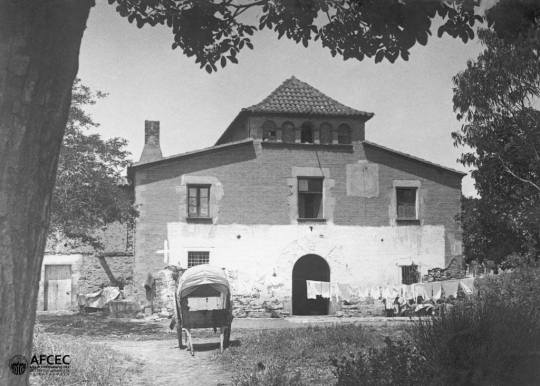

Barça fans, do you recognise this place?
This is a photo of what la Masia (Barça's youth academy) looked like in 1925. (Photo colorized by Catalunya Color).
Back then, it was literally just a masia. "La masia" simply means "the farmhouse" in Catalan. This particular masia is called Masia de Can Planes. It dates back to, at least, the year 1515, where a written document talks about the farm and its surrounding fields belonging to a man called Jaume Planes. It was owned by his descendants, who rebuilt and adapted parts of the building in different time periods, until the year 1950.
In 1950, Barça bought it from the last heir, Francesc Planes i Buera. They built Camp Nou (Barça's stadium) in the fields owned by this farm.
When Camp Nou was being built, the farmhouse was used as the meeting place for architects and where they made and kept the stadium's plans and models. After the stadium was inaugurated, the farmhouse became Barça's office building.


La Masia de Can Planes nowadays, with Camp Nou stadium behind it.
In 1978, the club decided to turn the farmhouse into the residence for Barça's youth academy, which became one of the most successful football youth academies in the world. It's renowned for its respect for students and their academic focus as well as the sports side of it. That's when Barça's youth academy became known as La Masia.
Many of La Masia's students have gone on to brilliant football careers, including Pep Guardiola, Leo Messi, Xavi Hernández, Andrés Iniesta, Carles Puyol, Carles Busquets, Cesc Fàbregas, and Gerard Piqué, among others.
In 2011, Barça decided to upgrade their youth academy to be able to have more students. They built a new building as their residence in Sant Joan Despí (a city right next to Barcelona), in the Ciutat Esportiva Joan Gamper (Joan Gamper sports complex). This new building has the capacity to be home for 85 sportspeople, compared to the 60 that could be housed before (12 in the farmhouse and 48 in the equipped spaces in the North Goal of the Camp Nou).
It's next to the rest of sports facilities in the Joan Gamper sports complex, which includes 5 natural grass football pitches; 4 fieldturf pitches; 3 sports pavilions for basketball, handball and futsal, training areas for goalkeepers and specific techniques, gymnasiums, first aid areas, press conference rooms, service buildings, a pool, and saunas used for recuperating from injuries.
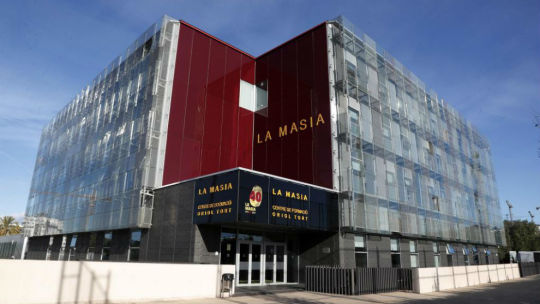
The modern "La Masia" building in Sant Joan Despí.
Even though they moved to a new building that isn't a masia (farmhouse) anymore, everyone has always called Barça's youth academy "La Masia", so they still call it that.
#barça#futbol#esports#barcelona#sant joan despí#catalunya#football#soccer#fc barcelona#la masia#xavi hernandez#leo messi#pep guardiola#sports#fc barca#barca#la liga#training
41 notes
·
View notes
Text

Archeologists have unearthed the lost remains of a Teotihuacan village, including human burials, in the heart of Mexico City.
Ceramics found scattered around the site, which is located 1.5 miles (2.4 kilometers) northwest of the city's historical center, indicate the village dates from around A.D. 450 to 650 and may have housed a community of artisans and craftspeople.
"The finding was surprising," said an archaeologist at Mexico's National Institute of History and Anthropology (INAH) Directorate of Archeological Salvage, who co-led the dig. "It shows that 1,300 years ago, the islets inside Lake Texcoco, on which Mexico City was founded [after the lake was drained], already supported a permanent population that took advantage of the resources of the lake environment," he told Live Science in an email.
The newly excavated settlement may have formed during the "ruralization" of Teotihuacan, an ancient metropolis that flourished in the highlands of what is now central Mexico between A.D. 100 and 650.The village is located 25 miles (40 km) to the southwest of Teotihuacan and may have been one of several small towns that supported themselves through subsistence farming and fishing as the ancient city reached its zenith. These settlements maintained commercial ties to Teotihuacan, and the new discoveries shed light on the role these settlements played in the city's supply network.
"The discovery is rare because it occurred in a fully urbanized context where the possibility of finding archeological evidence associated with the Teotihuacan culture was very low," he added.
Gifted craftspeople
Archeologist Francisco González Rul discovered the first clues of this village's existence in the 1960s, during construction works in the Mexican capital. Based on ceramics he unearthed, González Rul suggested at the time that the inhabitants were self-reliant fishers and gatherers. The new excavations confirmed this.
Several previously unseen architectural structures — including post holes, flooring, channels and an artesian well — as well as ceramics have come to light. The excavation also unearthed three human burials containing the skeletons of two adults and a child.

Teotihuacan was an ancient metropolis that flourished in the highlands of what is now central Mexico.
Teotihuacan ceramics are categorized into phases, according to a 2016 study in the journal PLOS One. The newfound ceramics displayed features that correspond to the Xolalpan (A.D. 350 to 550) and Metepec (A.D. 550 to 600) phases in the 2016 study, which enabled the researchers to date the remains of the village and its inhabitants.
The Teotihuacans were gifted artists and craftspeople, said a professor of archeology and director of the Teotihuacan Research Laboratory at Arizona State University. "To decorate the walls of their houses and temples, the Teotihuacanos used the same fresco technique used by Michealangelo to paint the Sistine Chapel," told the professor Live Science in an email. "They also used the fresco technique on ceramic vessels."
The ceramics could reveal important information about trade with Teotihuacan through chemical analysis, said the professor.
Archeologists have concluded the excavations and are now analyzing the discovered materials and bones. Much of Teotihuacan's sprawling architecture remains buried, but the site is largely unaffected by modern construction and will eventually be unearthed in its entirety.
#🇲🇽#mexican archaeologists#mexico#Francisco González Rul#indigenous#native#Teotihuacan#mexico city#National Institute of History and Anthropology#INAH#Michealangelo#fresco technique#Lake Texcoco
43 notes
·
View notes
Text
Chat Pile - God's Country

Chat Pile was the surprise breakout act for many fans of heavy, noisy, or otherwise extreme music last year, myself included. And for good reason, even though the preceding EPs the band released are sonically in line with it, God's Country hit like a totally different out-of-control pick-up truck through the living room wall of an Oklahoman house in the middle of the day (if you know you know; if you don't know, don't worry about it). The band members are from the desolate middle-American saucepan state, and the hidden horrors of the deep red rural hellscape of their home environment certainly seeps through on the sarcastically-titled God's Country, juxtaposed frighteningly with the album cover. Benign on first glance, the beige background features the image of a bunch of powerlines and energy infrastructure, with a massive detention center behind. Such a typical sight in the more remote parts of the U.S., but once the identity of the buildings of the image become clear, the album cover's statement on America's carceral system is impossible to miss.
It's hard in this day and age with modern metal production to really stand out from the crowd on heaviness alone, but like I said, Chat Pile hit with an unexpected and truly unique kind of noise/sludge metal heaviness. Aggressively rumbly distorted bass lines mixed as high as (if not higher than) the down-tuned guitars, booming and thundering drums, and swampy clean guitar tones are all well-arranged in chaotic and thrilling dynamic from front to back. But the real show-stealer on God's Country is vocalist Raygun Busch. The vocal prowess Busch displays across the album is not exactly the traditional sort (impeccable control of a variety of techniques across a wide vocal range). Rather, what makes Busch's performance compelling is how visceral and uncontrolled it comes across. It's still a talent that he's wielding and it only sounds uncontrolled, at least partly. The range his performance spans on the album goes from droning and unsettling spoken word, to dissociative and inebriated moaning, to the full-on manic breakdowns of full-throated wailing, shouting, and shrieking that really chill you to the bone.
The band do quite a fine job merging the theatrical horrors of B-movie cinema with the untold real-life horror stories of modern America: ("God's country"), using the excesses of the former to reel you in and press your face up to the latter. The first song on the album, "Slaughterhouse", explodes out of the gate with a concussing, industrial-grade barrage of bass-y distorted sludge that almost certainly leaves all heads ringing throughout the venue in a live setting. The lyrics leave a healthy amount of room for interpretation, but the most likely interpretation given the title is the detailing of the industrial-sized horrors of factory farming, specifically the trauma inflicted upon the workers: being watched by all the animals, trying not to look into their eyes, the head-ringing loudness throughout the labyrinthian and unescapable facility, and all the dreadful, traumatizing screaming. It's a fucking chilling track, deserving of it's pulverizing instrumentation.
The album's second track, "Why?", is arguably the standout cut on the album; unlike the first track there's really no room for interpretation. It's the most direct the band gets on any song on the album. Raygun Busch starts with an inquisitively perplexed delivery of the simple question, "why do people have live outside?", and escalates the same unanswered question to a crazed, furious, repetitive interrogation of America's inhumane treatment of the homeless. It's a simple, yet bloodcurdlingly convicting confrontation of the broader systems that brutalize the impoverished to protect the wealthy and the illusion of American utopia.
And the album does not let up from there, even on the more relatively subdued (less screaming) songs. The more instrumentally understated "Pamela" details in poetic brilliance the recurrent bargaining mechanism to cope with the torture of lingering grief and the suicidal (possibly also homicidal) resignation of a parent (probably a mother) losing a child to a drowning accident. "Wicked Puppet Dance" makes an effective use of lyrical brevity over dizzyingly pounding instrumentation to vividly portray the hallucinatory and psychosis-inducing trappings of meth addiction. The grim, unsettling subject matter and imagery of the songs and the deranged delivery of the lyrics evoke equal comparisons to heady experimentalists Xiu Xiu and to critical pariahs like self-titled-era Korn.
The always-topical "Anywhere" spotlights the endemic fear of the ever-looming possibility of being caught the fire of the American-signature brand of mass gun violence literally... anywhere, while the merciless "Tropical Beaches, Inc." focuses on the slower way America likes to kills you, through the ceaseless grind of enslavement to capitalism.
The odd name of the album's closing track, "grimace_smoking_weed.jpg", only serves to disarm you for possibly the most terrifying moment on the album. On the 9-minute closer Raygun Busch frantically and incoherently describes desperately trying to resist being compelled to commit suicide by a haunting/recurring hallucination of the furry purple McDonald's mascot under the effects of a bad heroin trip. The lyrics are so all over the place and so chaotic, the voice of the speaker shifts to and from Busch himself and the demonic hallucination of Grimace in his head. The closing track here is definitely Busch's most harrowing performance, and it's his vivid, soul-chilling panic that really gives this song the edge. The obvious parallel to Korn here is to Jonathan Davis' similarly disturbing and traumatizing performance at the end of the self-titled album on "Daddy". Whereas Davis opened up his old wounds in a very questionably unhealthy manner and channeled his trauma through his most tortured vocal performance to make a monumentally terrifying piece of art that highlights the lasting torment of trauma from childhood abuse, Raygun Busch unleashes his full vocal madness to give sight to the invisible haunting thralls of the looming specter of suicidal tendencies and the nightmarish trappings of drug addiction. Both incredible, petrifying, nightmarish, and eternally memorable performances that deserve the utmost respect.
God's Country is one of those albums where at the end of it you kind of just have to sit for a while and decompress from it. It's a very mentally/emotionally draining album, especially at its finale, but despite that, it's also a cathartically pounding and validating album. There's a lot of cognitive dissonance that all of us have to live with or at least perform, living in the United States (and the rest of the western world). God's country is the richest country in the world, the most advanced, and supposedly the most capable, the best place in the world to live, heaven on Earth. And yet, there's so much hell. So much fucked up shit, so much suffering, so much that doesn't seem right. And you know that sense that something's wrong is so widely pervasive because it's the feeling that propagandists for the powerful try to redirect toward scapegoats like immigrants, people of color, queer people, etc. Anyone but the wealthy whose insatiable and senseless greed is fed through our labor. The way Chat Pile cut straight through all the noise and confusion to get at the real issues that make horror such a latent everyday pollutant all across the country that we're all inoculated to is strangely affirming and energizing. It pushes your face up to glass to look at the grotesque inner workings of the mundane everyday things you pass by on the way to your job, take for granted as normal, and think nothing of. The suffering that drives the engines that churn out the illusion of American prosperity, and that lock the vast majority of us in subclinical misery. It shows you what really makes God's country such a living hell.
I love this fucking album; it is grueling to sit through, but it's rewarding and honestly not a hard listen at all. The impeccably heavy instrumentals sort of tap into that constantly heightened sense of urgency as though the band is communicating that, yes, they're seeing and feeling what you're seeing and feeling. And honestly, for such a critically-acclaimed album, it plays surprisingly down in the muck and the mud with the people. It's poetic, but it's not inaccessible or unnecessarily cryptic. It's brilliant, but it's not snobbish. Chat Pile meddle shamelessly with the emotional rawness of grunge and unrestrained heavy fervor and fury of nu metal, and it's just subtle enough that the reviewers who ordinarily turn their noses up to such low-brow shit probably didn't notice they had enjoyed a nu metal album until it was too late. That's right, Chat Pile are nu metal, process that on your own.
9/10, best debut of 2022 and one of the best albums of the year in any category.
#Chat Pile#God's Country#new music#new album#album review#sludge metal#noise rock#noise#noise metal#noise music#experimental music#nu metal#metal#heavy metal
40 notes
·
View notes
Photo

On this day, 20 January 1973, Amilcar Cabral, one of Africa's foremost anti-colonial leaders, was assassinated, about eight months before he could see his homelands of Cape Verde and Guinea Bissau gain independence from Portugal. While an agronomy student in Lisbon, Portugal, he founded student movements dedicated to opposing the ruling dictatorship of Portugal and promoting the cause of independence for the Portuguese colonies in Africa. When he came back to Africa, Cabral led the anti-colonial movement of Guinea-Bissau and Cape Verde Islands and the ensuing war of independence in Guinea-Bissau. From 1963 to his assassination in 1973, Cabral led the PAIGC's guerrilla movement (in Portuguese Guinea) against the Portuguese government, which evolved into one of the most successful wars of independence in modern African history. After setting training camps, he taught his troops to teach local crop growers better farming techniques, so that they could increase productivity and be able to feed their own family and tribe, as well as the Revolutionary soldiers. He was deeply influenced by Marxism, and adapted it to Guinea Bissau's social and economic realities, and became an inspiration to revolutionary socialists and national independence movements worldwide. The fight against colonialism in Portugal's colonies eventually led to revolution in Portugal and the downfall of the decades-long dictatorship. Learn more about the revolution in our podcast episodes 41-42: https://workingclasshistory.com/podcast/e41-42-the-portuguese-revolution https://www.facebook.com/workingclasshistory/photos/a.296224173896073/2190430584475413/?type=3
140 notes
·
View notes